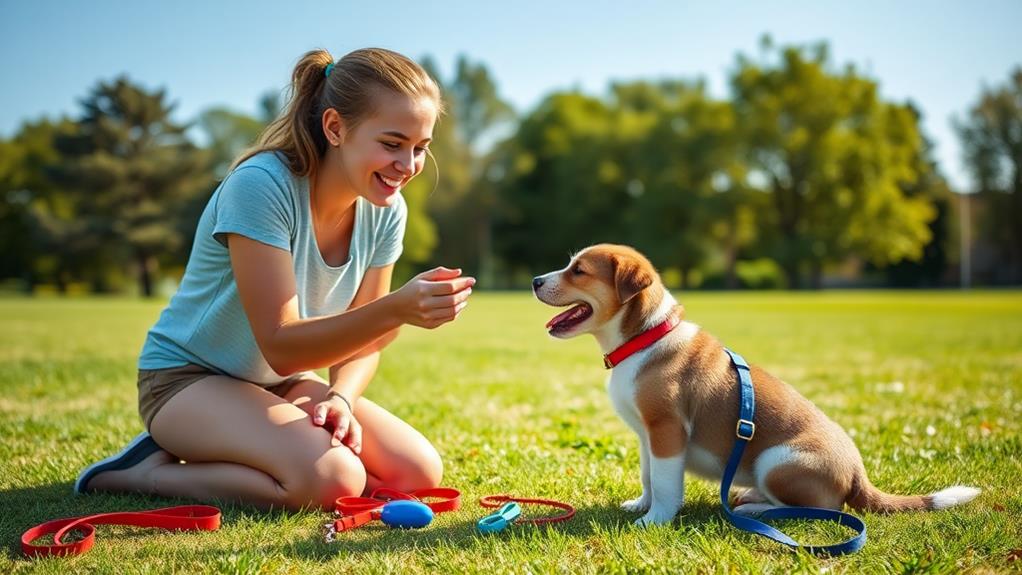Training your dog can be easy and fun if you focus on a few key strategies. Start by understanding your dog's behavior and recognizing their signals. Use basic commands like "sit," "stay," and "come" to establish a solid foundation. Reinforce good behavior with treats and praise, making the experience enjoyable for both of you. Consistency is pivotal, so keep your training sessions short and structured. Don't forget the importance of socialization; expose your dog to various people and environments. By mastering these tips, you're setting the stage for a well-behaved companion. There's plenty more to explore, so keep going!
Understanding Your Dog's Behavior
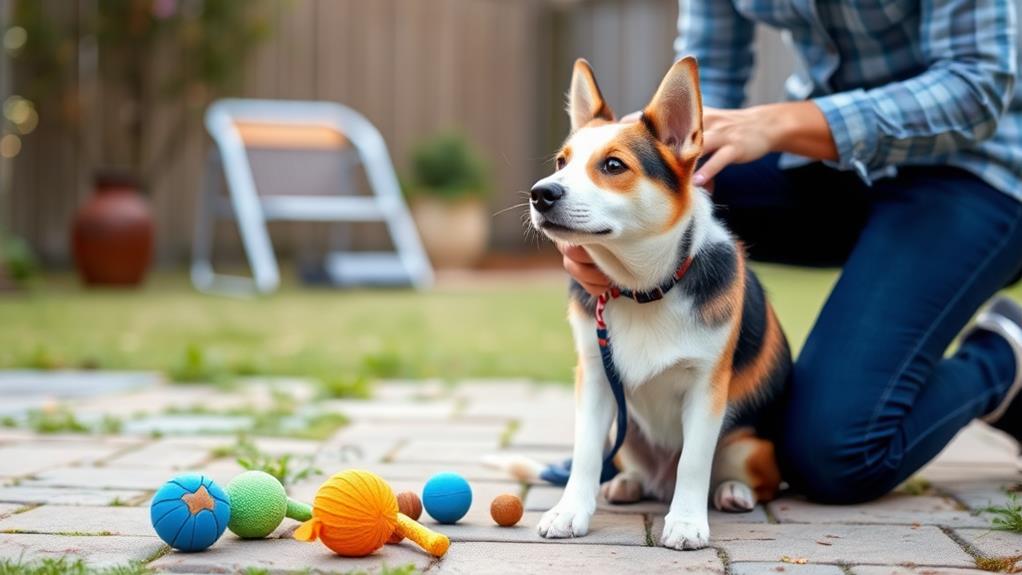
Understanding your dog's behavior is indispensable for effective training, as it helps you respond appropriately to their needs and emotions. Each dog has a unique personality and set of instincts, so paying attention to their signals can enhance your bond. For instance, if your dog wags their tail and approaches you, they're likely feeling happy and impatient for interaction. On the other hand, if they cower or tuck their tail, they might be scared or anxious.
Observe how your dog reacts to different situations. Do they bark at strangers or hide when loud noises occur? These behaviors can indicate their comfort levels and what triggers stress or excitement. By recognizing these signs, you can create a more supportive environment that fosters positive behavior.
Additionally, socialization plays an essential role in how dogs behave. The more experiences and interactions they have, the better they'll adapt to new people and environments. Always reward good behavior with praise or treats, reinforcing positive actions. With patience and understanding of their behavior, you'll set a solid foundation for training and create a happier, well-adjusted dog.
Essential Training Commands
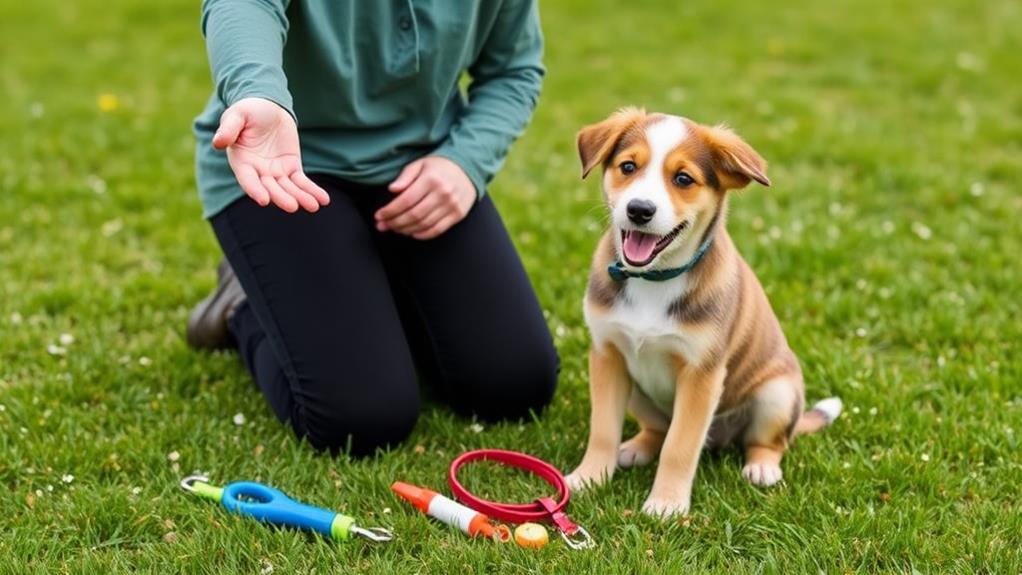
Mastering a few essential training commands can vastly improve your dog's behavior and enhance your communication. These commands lay the foundation for a well-behaved pet and help you develop a stronger bond. Here are some key commands you should focus on:
| Command | Purpose |
|---|---|
| Sit | Helps your dog learn to be calm and patient. |
| Stay | Keeps your dog in one place, preventing them from running off. |
| Come | Guarantees your dog returns to you when called. |
| Down | Encourages your dog to lie down, promoting relaxation. |
Start with one command at a time, practicing in short, fun sessions. Consistency is key, so use the same word and hand signals each time. Don't forget to praise your dog when they successfully follow a command. This builds their confidence and reinforces the behavior you want to see. With patience and practice, you'll see significant improvements in your dog's responsiveness. Remember, these essential commands are the first step toward a well-trained dog, making your daily interactions more enjoyable.
Positive Reinforcement Techniques
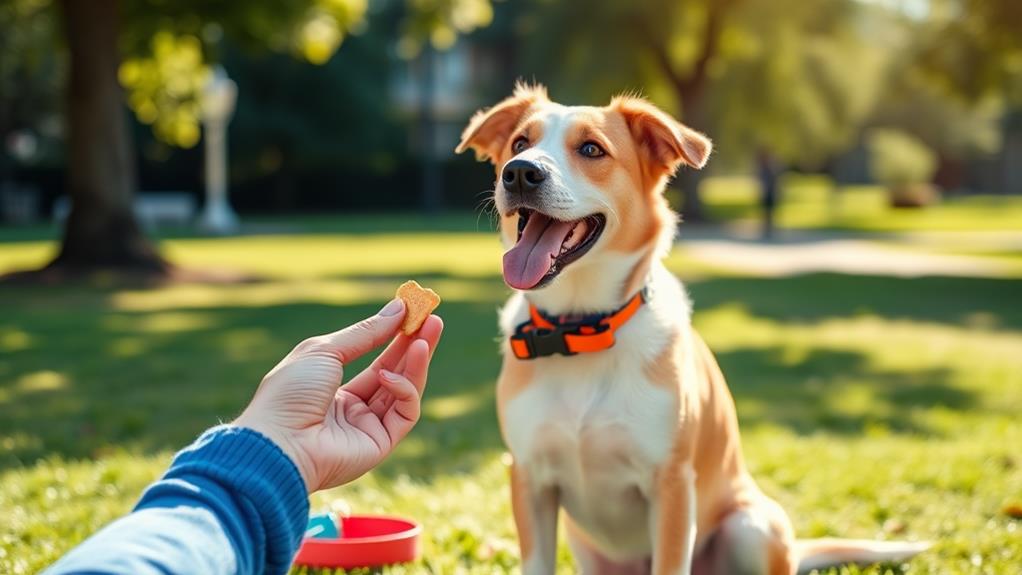
Using positive reinforcement techniques can transform your dog's training experience into a rewarding and enjoyable journey for both of you. This approach focuses on rewarding your dog for desired behaviors, making them more likely to repeat those actions in the future.
Here are three effective positive reinforcement techniques to get you started:
- Treats and Rewards: Use small, tasty treats that your dog loves. Reward them immediately after they perform the desired behavior, so they connect the action with the reward.
- Verbal Praise: Your voice can be a powerful tool. Use enthusiastic praise like "Good boy!" or "Well done!" when your dog performs correctly. This helps them understand that they've done something right.
- Playtime: Incorporate play as a reward. If your dog responds well to a command, engage them in a fun game with their favorite toy. This not only reinforces the behavior but also strengthens your bond.
Consistency and Routine
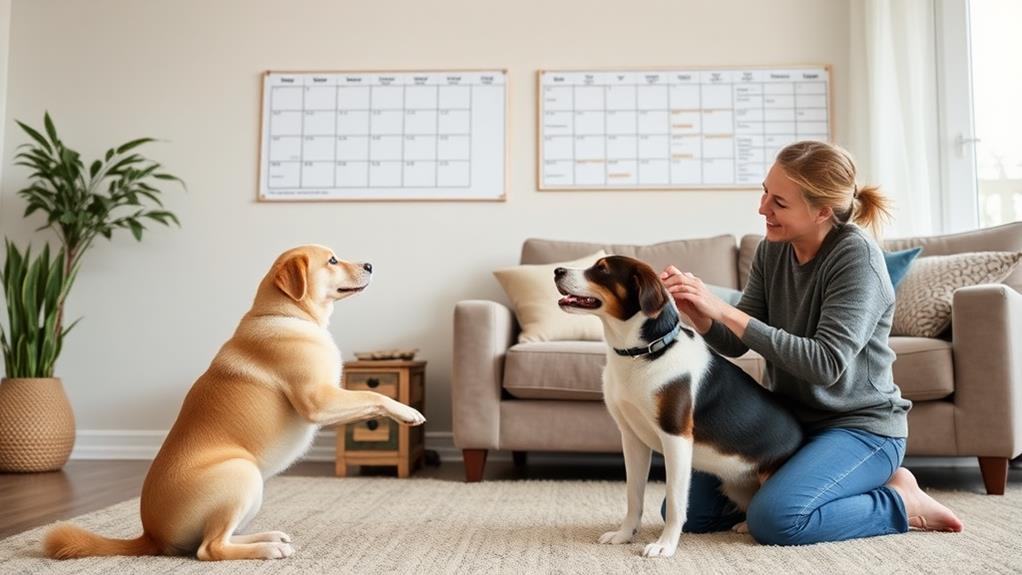
Establishing a consistent training routine is essential for your dog's success and your own peace of mind. Dogs thrive on predictability, and when you create a structured environment, they feel more secure and are better able to learn. Set aside specific times each day for training sessions. Whether it's a few minutes in the morning or evening, consistency helps reinforce what your dog learns.
Use the same commands, gestures, and tone of voice each time. This consistency allows your dog to grasp what you expect from them. If you vary your commands or training style, it can confuse your pet and hinder their progress.
Incorporate training into your daily activities, like practicing commands during walks or when feeding. This not only reinforces learning but also strengthens your bond with your dog.
Remember to keep sessions short and engaging. Aim for 5-10 minutes of focused training, and then follow up with playtime or treats as a reward. With regular practice and a solid routine, you'll notice improvements in your dog's behavior and responsiveness. Stick to a schedule, and you'll see how much your dog can achieve!
Socialization Tips for Dogs
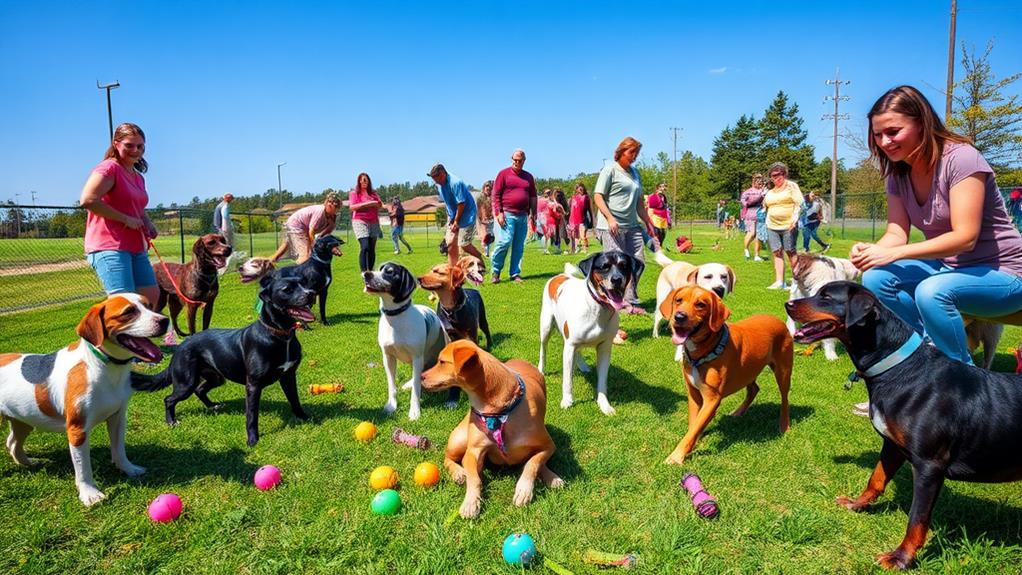
While it might seem formidable at first, socializing your dog is essential for their development and happiness. Proper socialization helps your dog become well-adjusted, reducing anxiety and aggression.
Take your dog to various places, like parks, pet-friendly stores, or even busy sidewalks. The more they experience, the more comfortable they'll become in different environments.
Arrange playdates with friendly dogs. Supervised interactions can teach your dog proper social cues and help them learn how to play and communicate with others.
Encourage your dog to meet a variety of people, including children, seniors, and individuals in uniforms. This exposure helps your dog learn to trust and interact with different types of humans.
Common Training Mistakes to Avoid
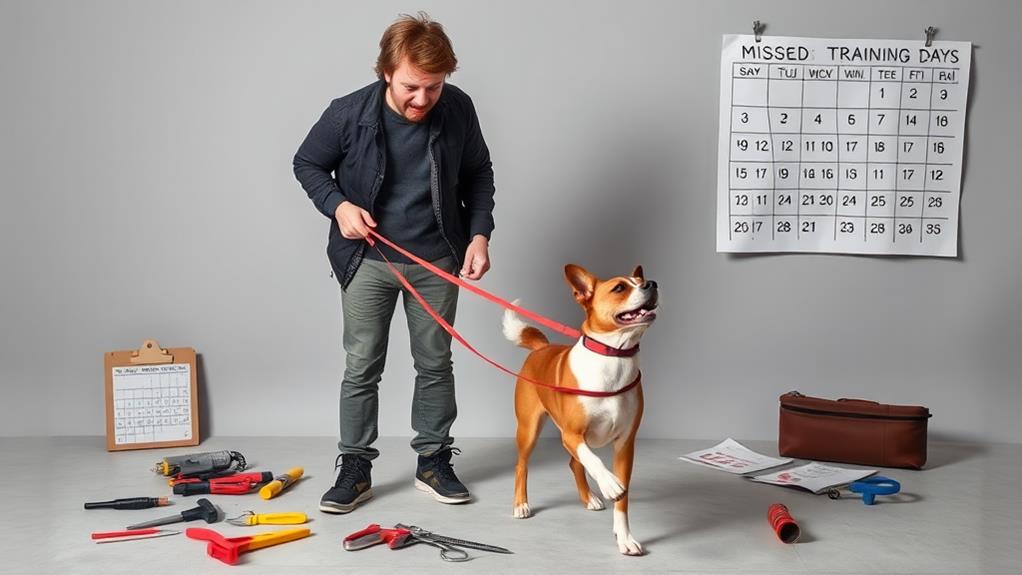
When it comes to dog training, avoiding common mistakes can make a huge difference in your success. One major pitfall is inconsistency. If you're not consistent with commands and expectations, your dog will struggle to understand what you want. Stick to the same words and signals every time.
Another mistake is using negative reinforcement. Yelling or punishing your dog can create fear and confusion, making training harder. Instead, focus on positive reinforcement—reward good behavior with treats, praise, or playtime.
Many beginners also overlook the importance of patience. Training takes time, and expecting instant results can lead to frustration. Be prepared to repeat commands and exercises until your dog understands.
Training sessions that are too long can overwhelm your dog. Keep sessions short and fun, aiming for 5 to 15 minutes, to maintain your dog's interest and focus.
Lastly, neglecting socialization can hinder your dog's development. Expose your dog to different environments, people, and other animals to foster good behavior.
Frequently Asked Questions
How Long Should Training Sessions Last for Puppies?
Training sessions for puppies should last about 5 to 10 minutes. Keep them short and engaging to hold their attention. You'll see better results when you make learning fun and rewarding for your furry friend.
Can Older Dogs Learn New Tricks Effectively?
Yes, older dogs can learn new tricks effectively! With patience and consistency, you'll find they often enjoy the mental stimulation. Keep sessions short and positive, and celebrate their achievements to boost their confidence and engagement.
What Are the Best Tools for Dog Training?
Imagine a magician's wand transforming your dog's behavior. You'll find clickers, treats, and harnesses are the best tools for training. They help you communicate effectively, making learning fun and rewarding for both you and your furry friend.
How Do I Know if My Dog Is Bored?
If your dog's chewing, pacing, or ignoring you, it's likely bored. Look for signs like excessive barking or destructive behavior. Engaging them with activities or new toys can help keep their interest alive.
When Should I Start Training My Dog?
Did you know that dogs learn best between 8 and 16 weeks? You should start training your dog as early as possible. This way, you'll establish good habits and strengthen your bond right from the start.
Conclusion
As you commence this journey of dog training, picture your pup happily responding to commands, tail wagging with excitement. Remember, patience and positivity are your best friends. With consistency and love, you'll build a bond that transforms those early training sessions into joyful moments of connection. So grab those treats, step outside, and watch your dog thrive as a well-behaved companion. Together, you'll create a beautiful story of trust and understanding, one command at a time.

